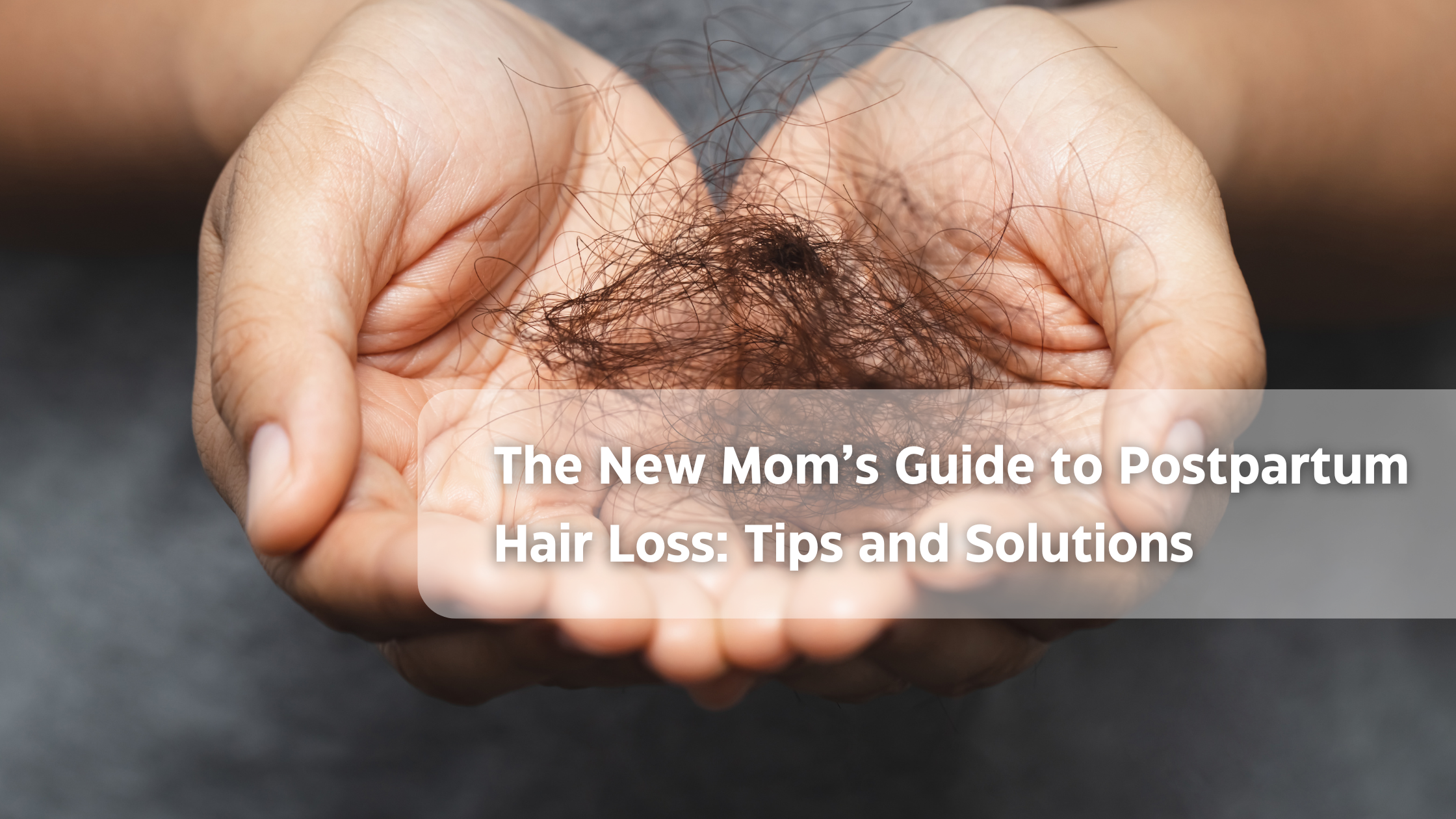The New Mom’s Guide to Postpartum Hair Loss: Tips and Solutions
WHY IT HAPPENS AND HOW TO MANAGE IT

Why Am I Losing So Much Hair?
Postpartum hair loss is a common and natural response to hormonal changes after childbirth. During pregnancy, high estrogen levels keep hair in a prolonged growth phase, but after delivery, estrogen drops sharply, triggering more hair to enter the resting and shedding phase. This often starts with 2 to 4 months postpartum, with daily hair loss increasing from the normal 100 strands to as many as 300 to 400. While it can be alarming, this shedding is usually temporary and not a sign of permanent hair loss.
How Long Does Postpartum Hair Loss Last?
Postpartum hair loss usually lasts between 3 to 6 months, and most women see hair growth return to normal within a year. However, the duration can vary. Some may recover sooner, while others take longer. It is important to be patient as your body adjusts. If hair loss continues beyond a year or seems excessive, consult a healthcare provider to rule out other causes and get tailored guidance.

The Ultimate Trendy Solutions for Postpartum Hair Loss Management
Choosing the right hair care products can make a big difference in managing postpartum hair loss. Look for shampoos and conditioners that are:
1. Volumizing: These products can help make your hair appear fuller.
2. Sulfate-free: Gentle cleansers that won't strip your hair of natural oils.
3. Biotin-infused: Biotin is a B-vitamin that supports healthy hair growth.
4. Protein-rich: Helps strengthen hair strands.
5. Moisturizing: Keeps hair hydrated and less prone to breakage.
The Best Diet and Nutritional Practices for Hair
1. Protein
Protein is essential for hair structure, as hair is made of keratin. Include lean meats, fish, eggs, and legumes for the amino acids needed to maintain healthy hair.
2. Iron
Iron prevents anemia, which can worsen hair loss. Boost your iron intake with spinach, lentils, and red meat like beef to support healthy hair growth.
3. Vitamin C
Vitamin C helps with iron absorption and protects hair follicles. Found in citrus fruits, berries, and bell peppers, it also supports collagen production for stronger hair.
4. Biotin
Biotin aids in keratin production, promoting healthy hair growth. Eggs, nuts, and sweet potatoes are great sources of biotin for stronger hair.
Styling Tips to Hide Your Hair Loss
1. Change Your Part
Switching to a side part can create volume at the crown, making your hair appear fuller.
2. Try a Volumizing Haircut
Shorter styles with layers add texture and make hair look thicker by creating more movement and lift.
3. Use Hair Accessories
Headbands, scarves, or clips can cover thinning areas stylishly while giving your look an instant refresh.
4. Consider Hair Fibers
Hair fibers are temporary products that cling to strands, instantly making your hair look thicker and fuller.
Avoid tight hairstyles that can cause tractional alopecia. Be gentle when brushing and use a wide-toothed comb to detangle wet hair. Remember, your goal is to minimize further hair loss while waiting for regrowth.
When to Consult with a Professional: Seeking Medical Advice and Treatment
Consult a healthcare provider if:
1. Your hair loss continues beyond 12 months postpartum.
2. You're losing hair in patches or experiencing scalp irritation.
3. Your hair loss is severe or causes significant distress.
4. You have a family history of genetic hair loss.
Final Thoughts
Postpartum hair loss is a common, temporary condition that usually lasts 3 to 6 months. While it may feel overwhelming, it typically resolves as your hormones stabilize. By using the right hair care, maintaining a healthy diet, and trying styling tricks, you can manage this phase with ease. If hair loss continues for a year or causes significant concern, seek advice from a healthcare provider. Patience and proper care will help your hair regain its natural volume over time.

